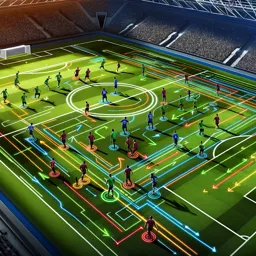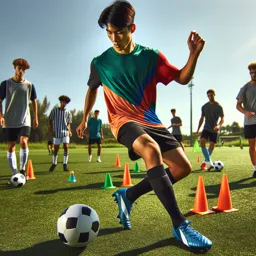Rhythmic gymnastics is a captivating and sophisticated sport that blends ballet, dance, and acrobatics with the skillful use of handheld apparatus. Celebrated for its elegance and athleticism, this discipline emphasizes flexibility, coordination, and grace as athletes perform choreographed routines set to music.
Key Apparatus in Rhythmic Gymnastics
Rhythmic gymnasts work with various apparatus, each adding unique challenges and visual appeal to routines. The main apparatus include:
- Ribbon: Long, colorful ribbons attached to sticks that create swirling, circular, and spiral patterns.
- Hoop: Lightweight hoops tossed, rolled, and spun with remarkable dexterity.
- Ball: Small rubber balls that are thrown, bounced, and balanced, demanding excellent hand-eye coordination.
- Clubs: A pair of slender, bat-like clubs requiring precision in tossing, catching, and swinging maneuvers.
- Rope: Used for skipping, swinging, and crafting intricate patterns, testing agility and timing.
Fundamental Skills and Techniques
Success in rhythmic gymnastics depends on mastering several core abilities:
- Flexibility: High leg extensions, backbends, and splits developed through consistent stretching.
- Balance: Holding poses on one leg and balancing apparatus on the body are essential.
- Coordination: Synchronizing body movements with apparatus handling is key to fluid routines.
- Creativity: Original combinations of movements and apparatus manipulation impress judges and audiences.
- Rhythm: Timing and synchronization with music enhance the performance’s flow.
The Training Process
Training involves physical conditioning, technical practice, and artistic development. Gymnasts typically train several hours daily, practicing apparatus skills alongside dance techniques, often incorporating ballet and strength training to enhance overall performance.
Benefits of Practicing Rhythmic Gymnastics
- Improved flexibility and posture
- Enhanced coordination and balance
- Opportunities for creative expression
- Development of discipline and perseverance
- Teamwork and social skills, especially in group routines
Getting Started
Whether a beginner or an aspiring competitor, rhythmic gymnastics offers a unique path to physical fitness and artistic accomplishment. Many local clubs and studios provide introductory classes, welcoming participants of various ages and skill levels.

































